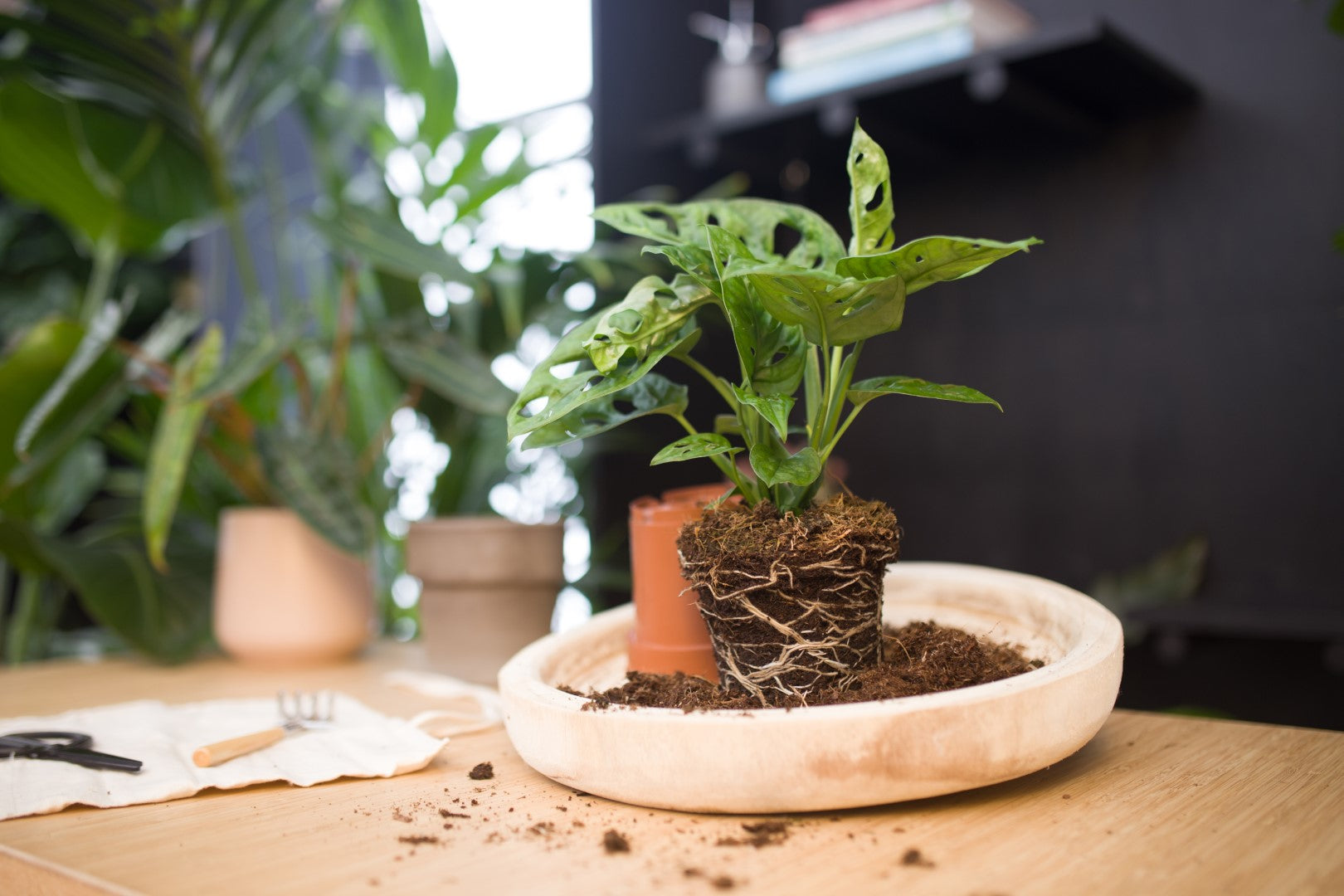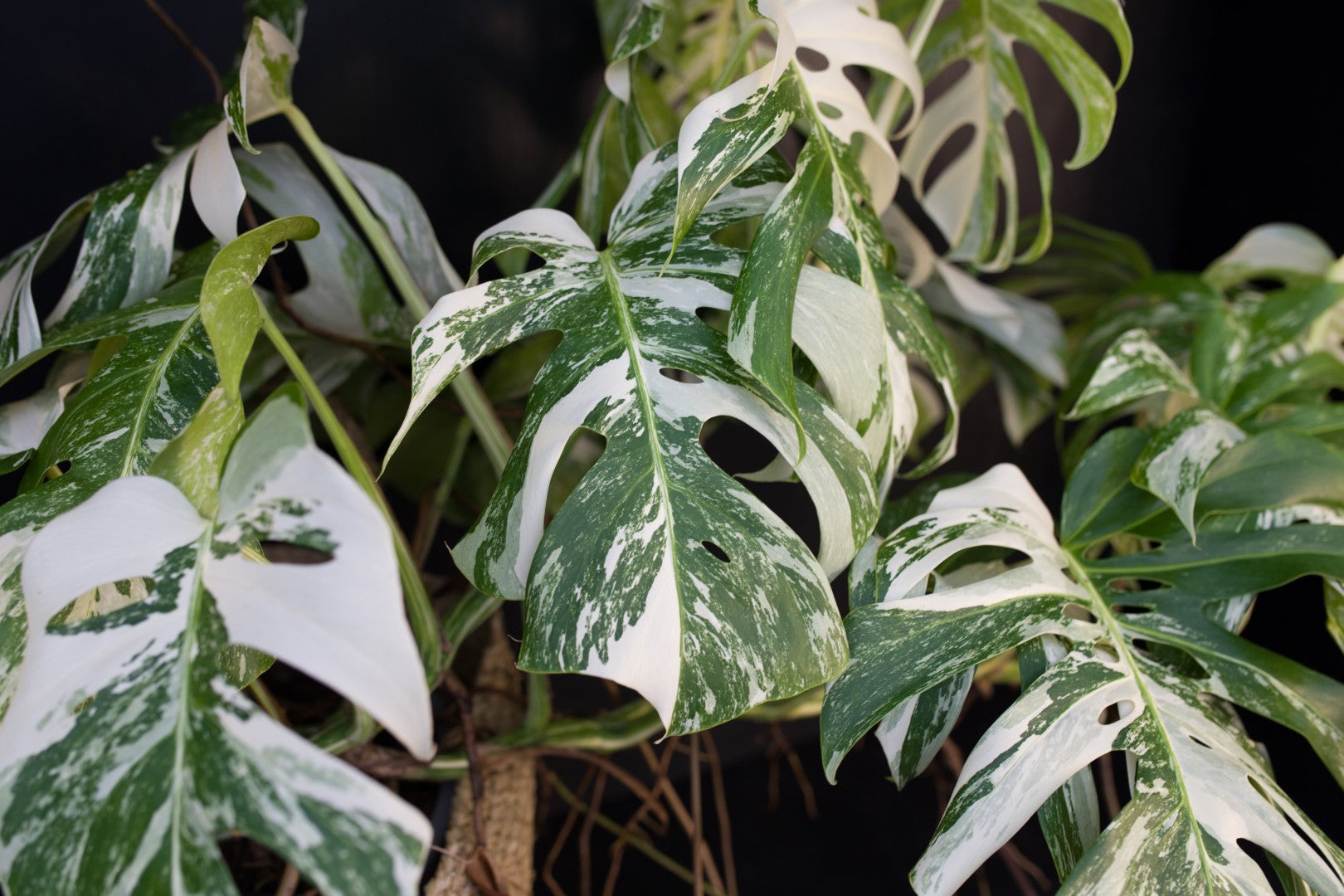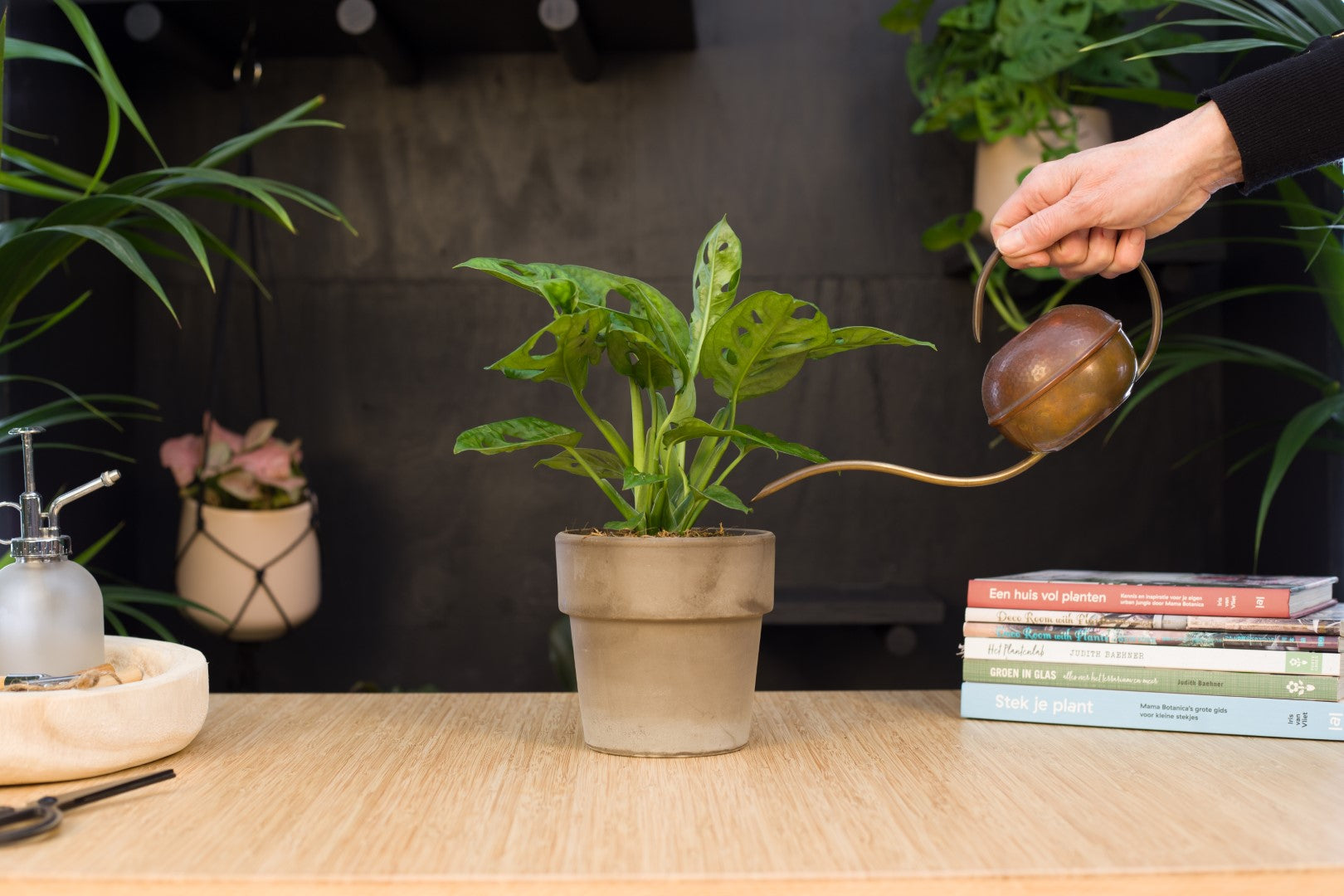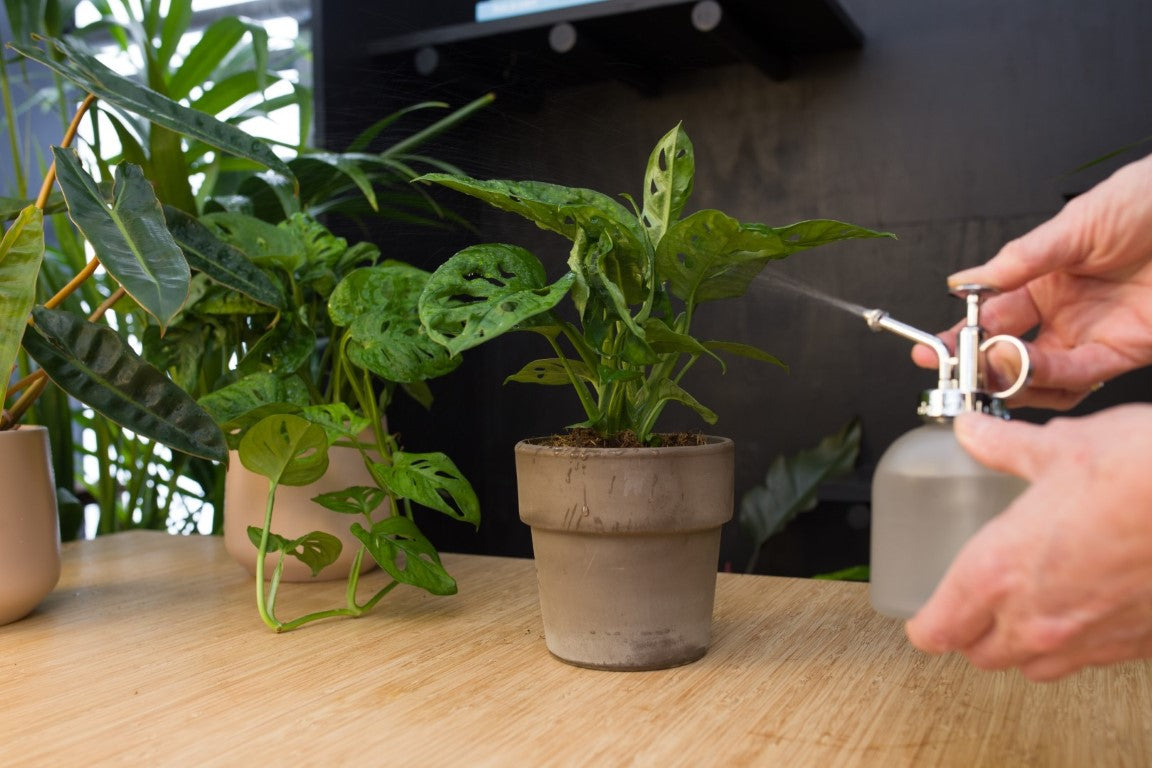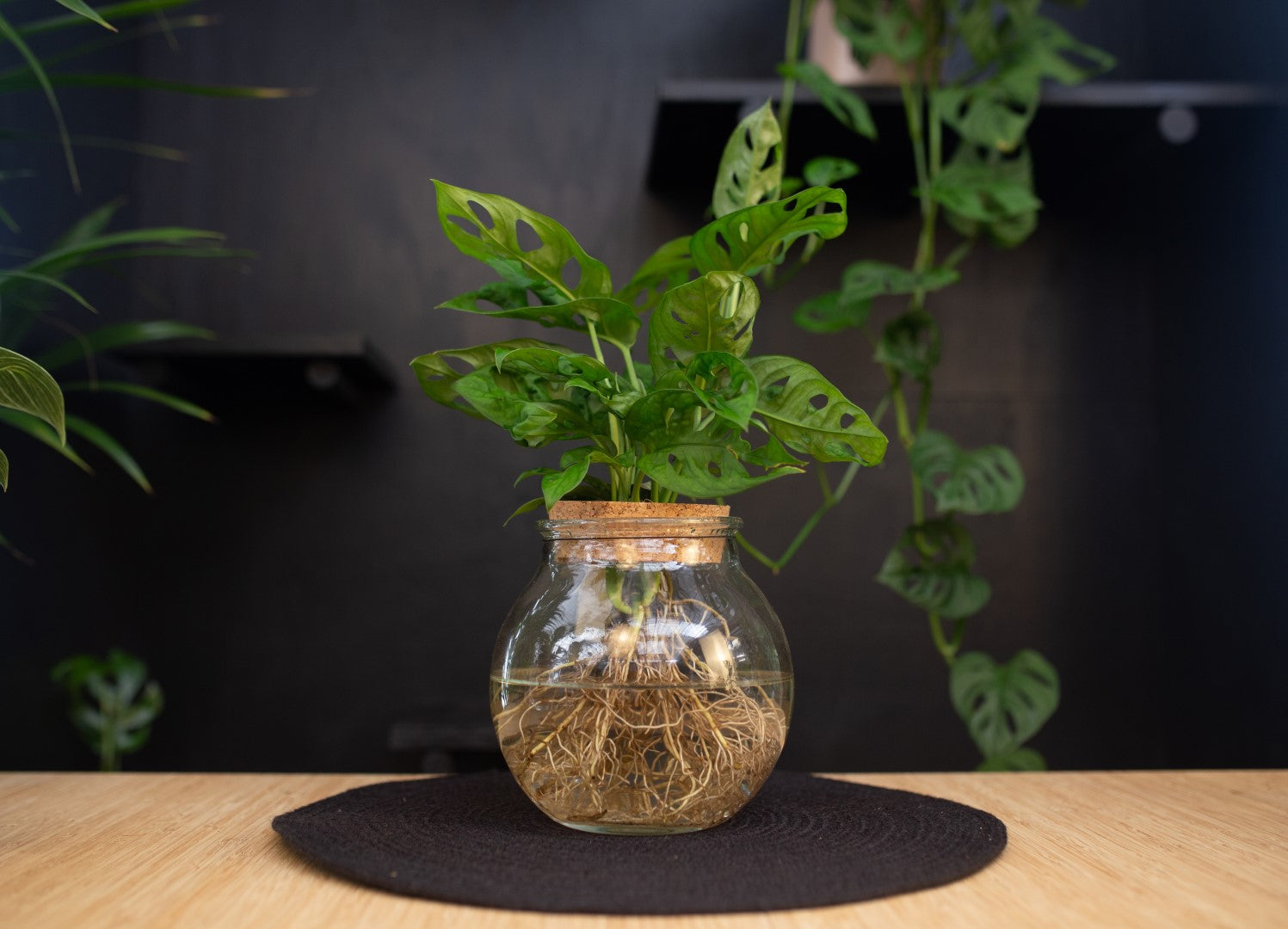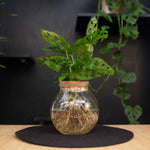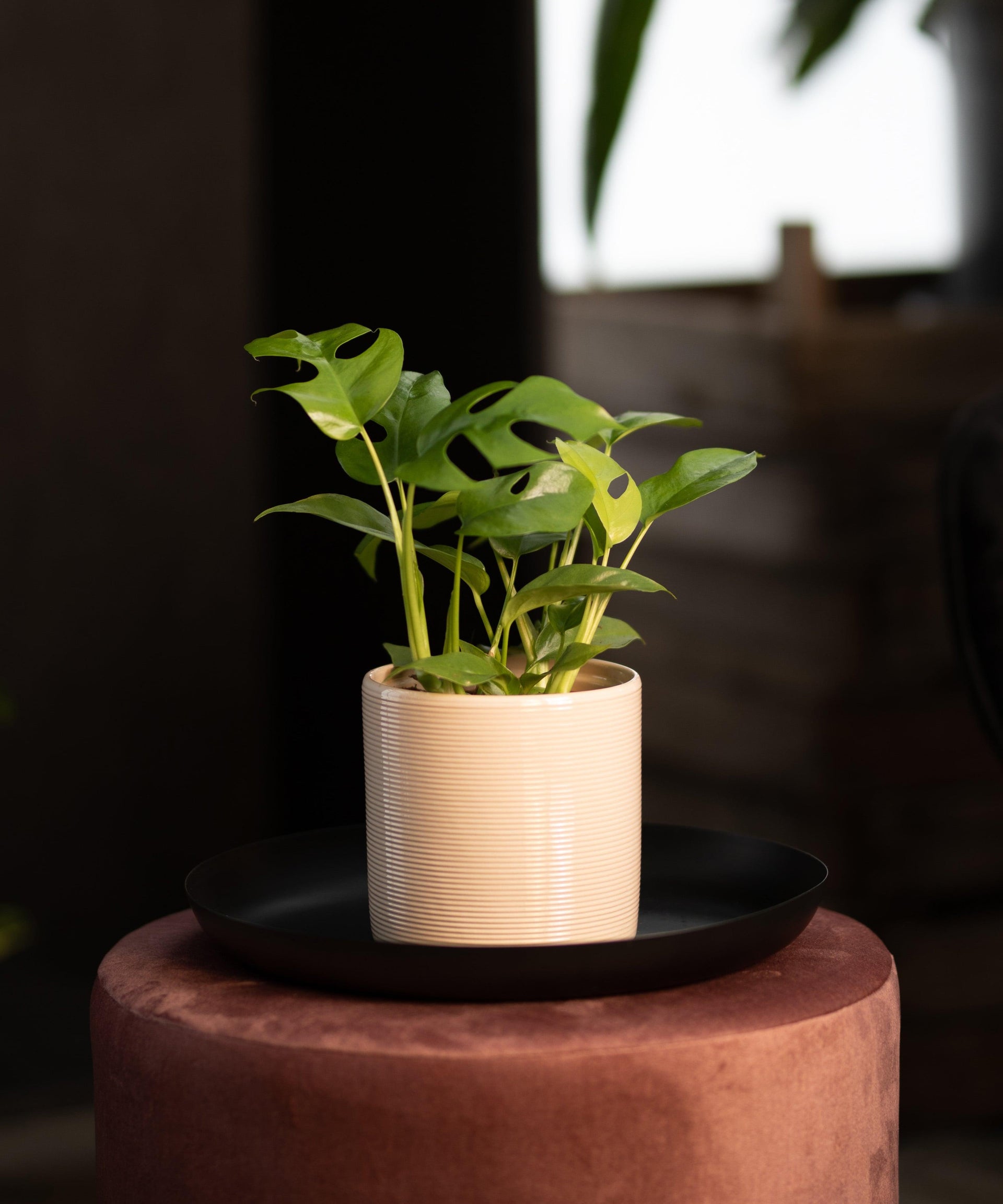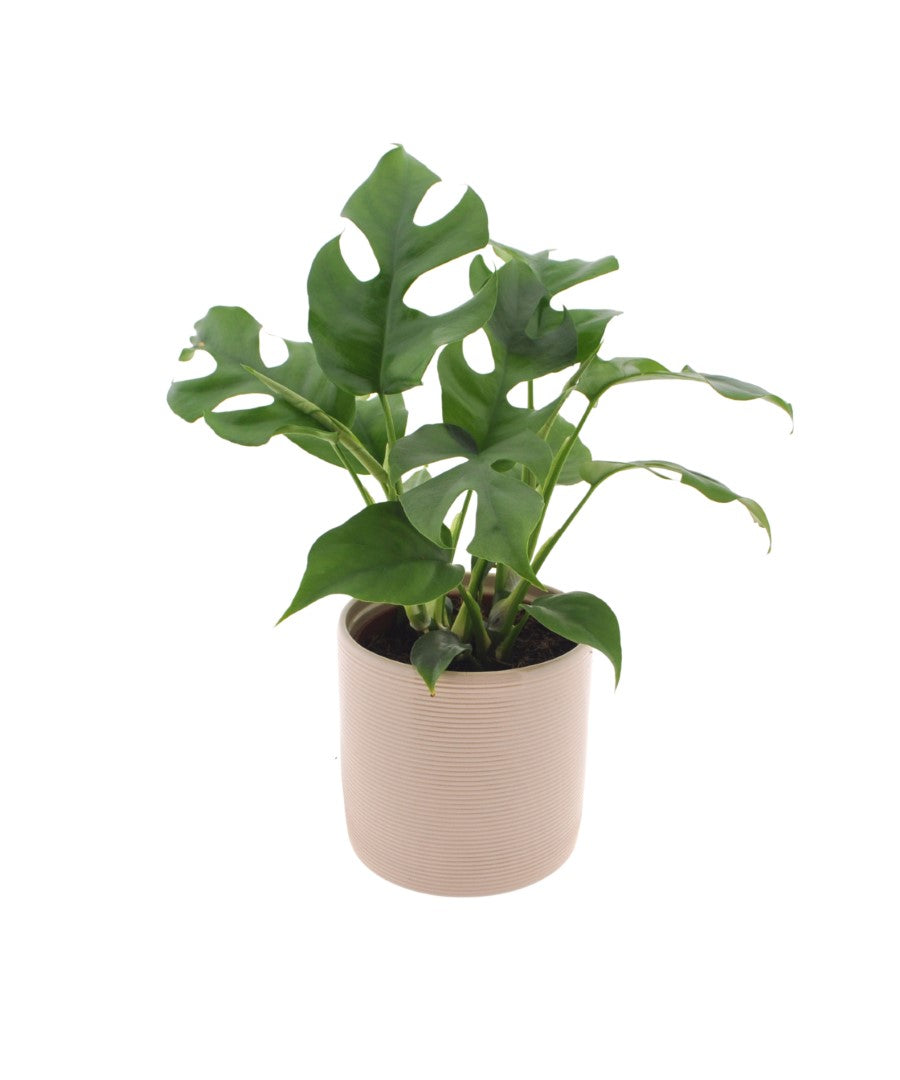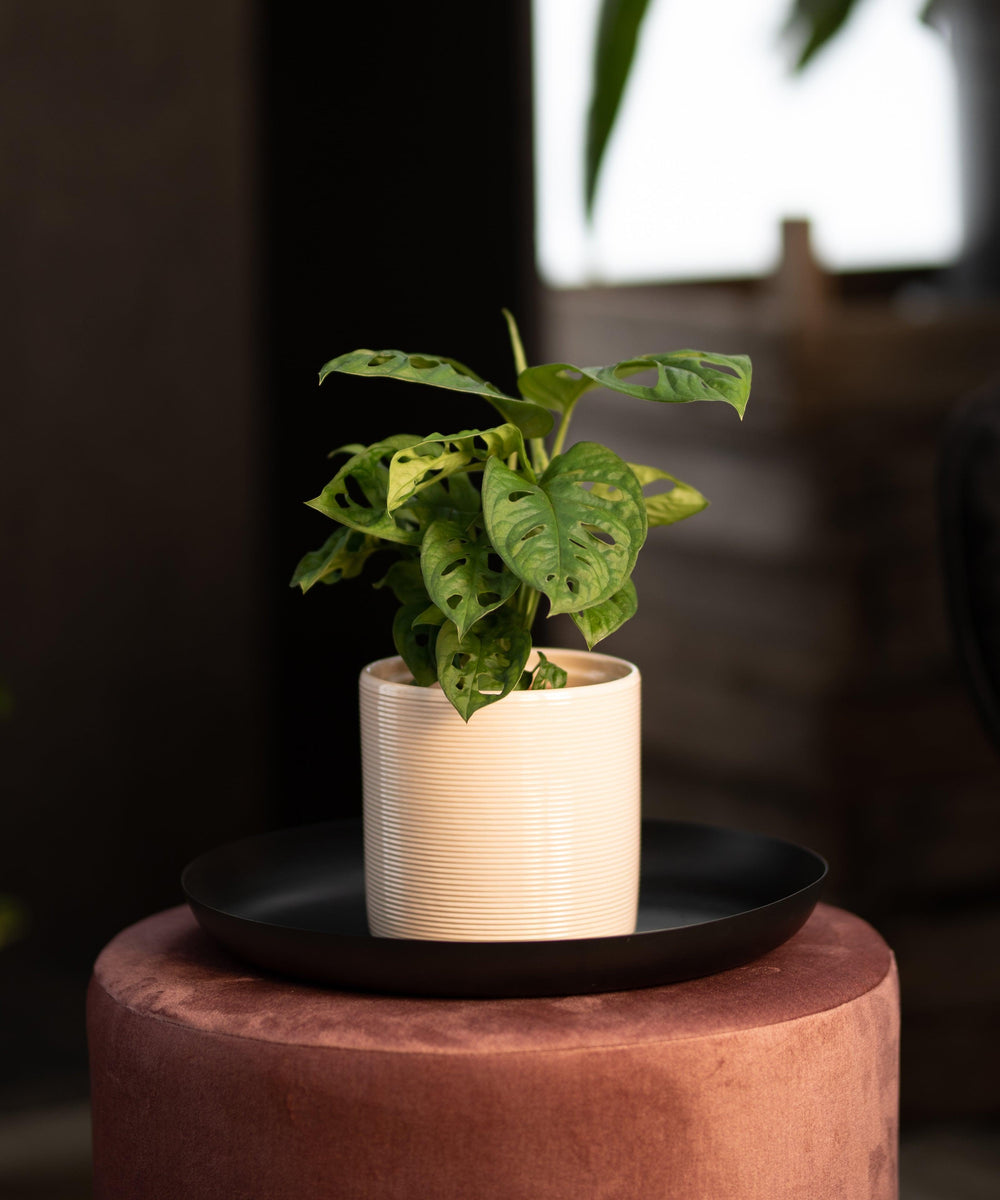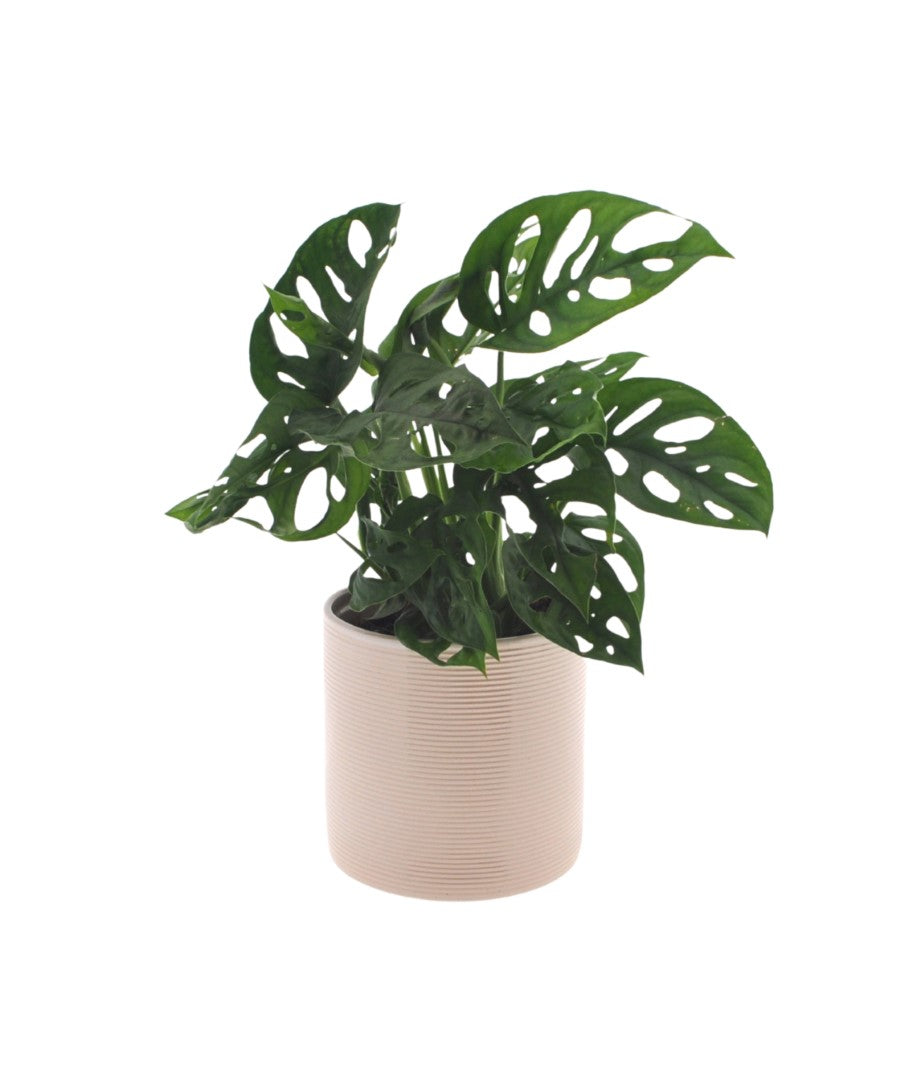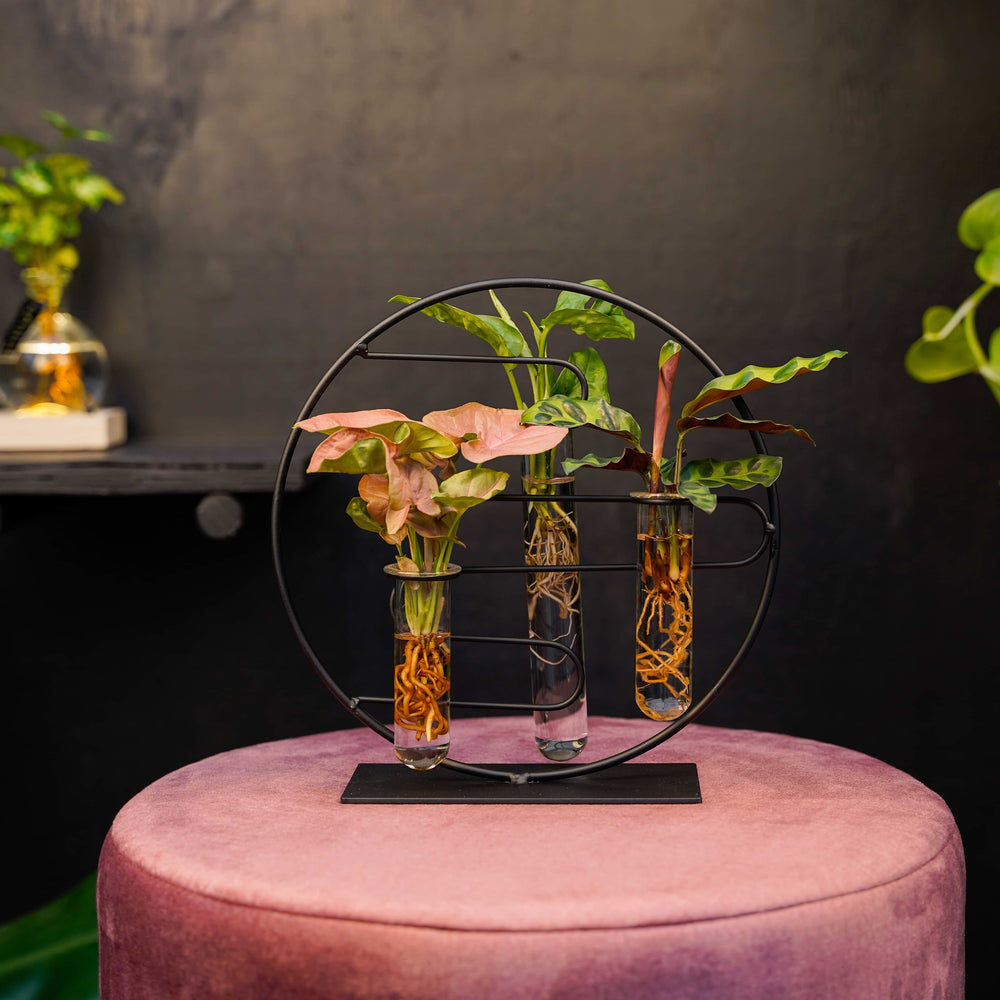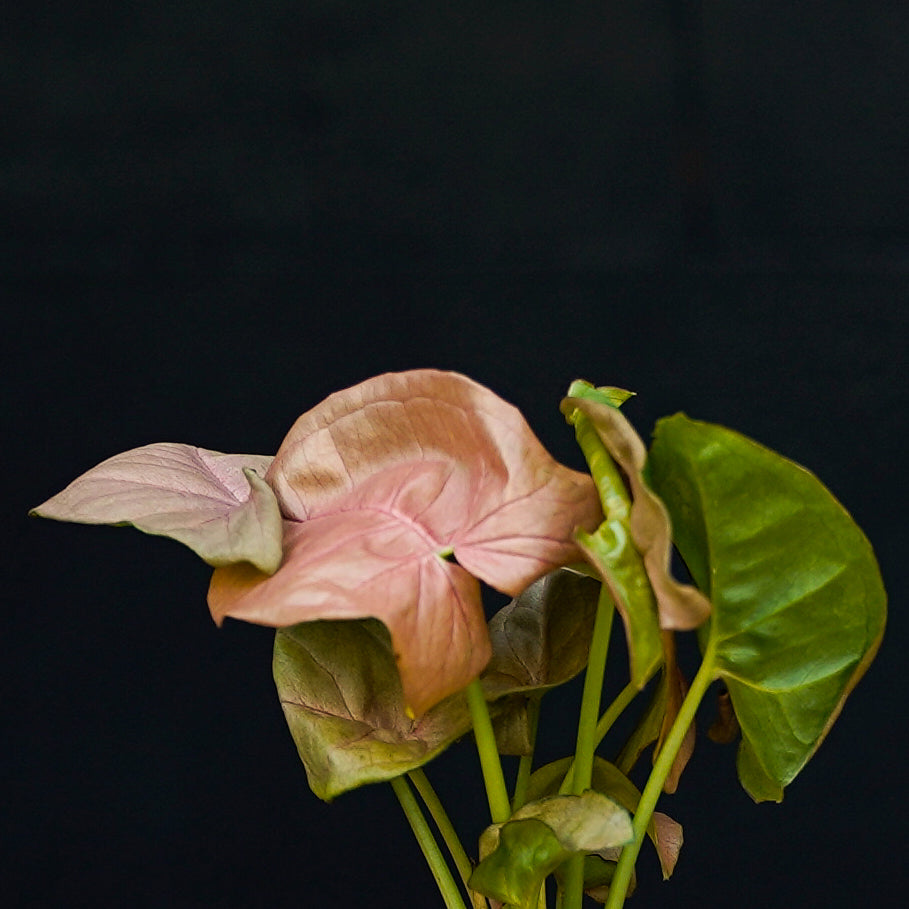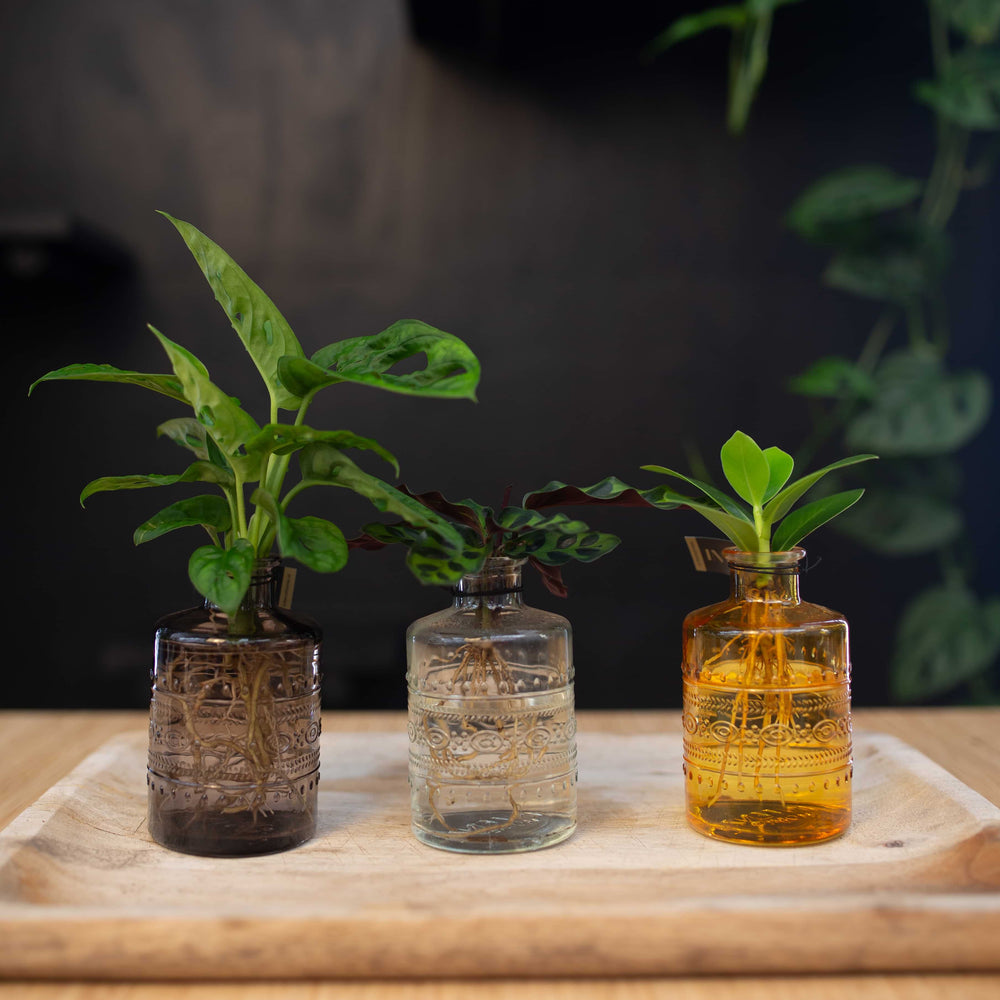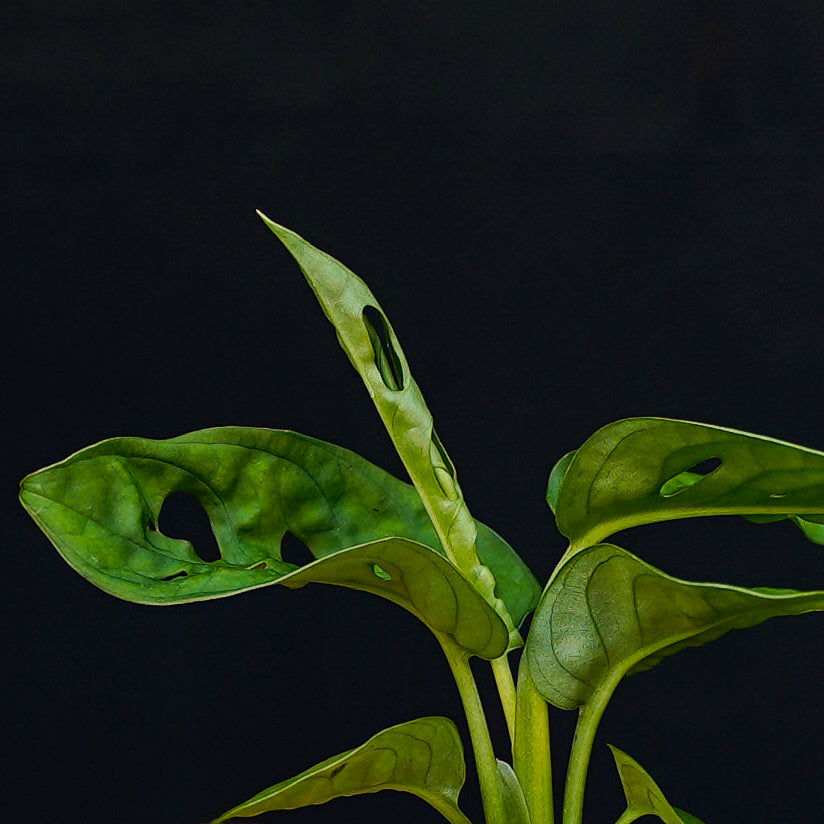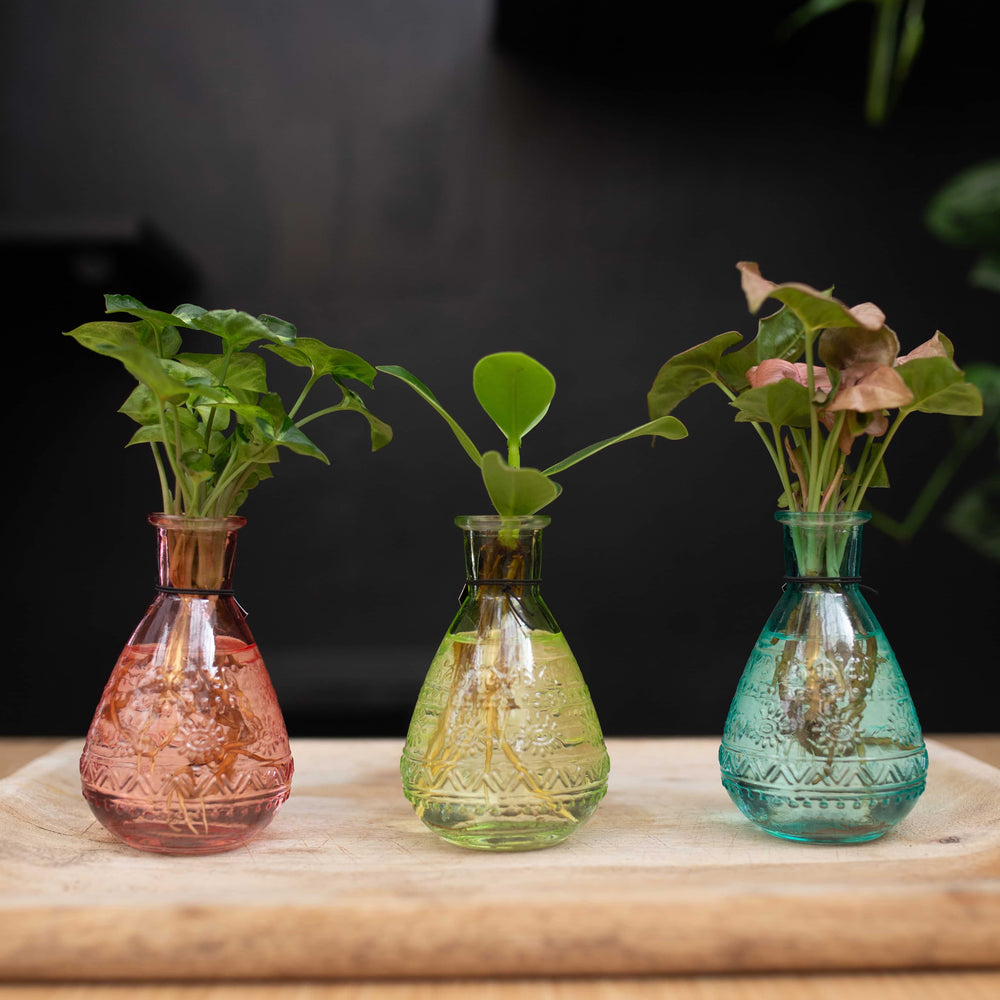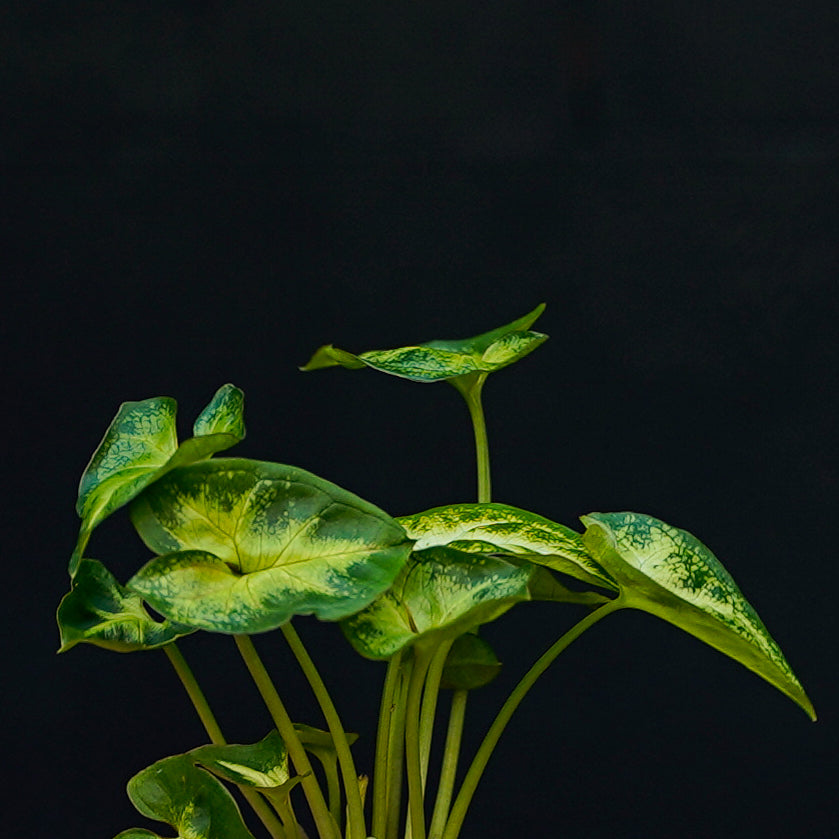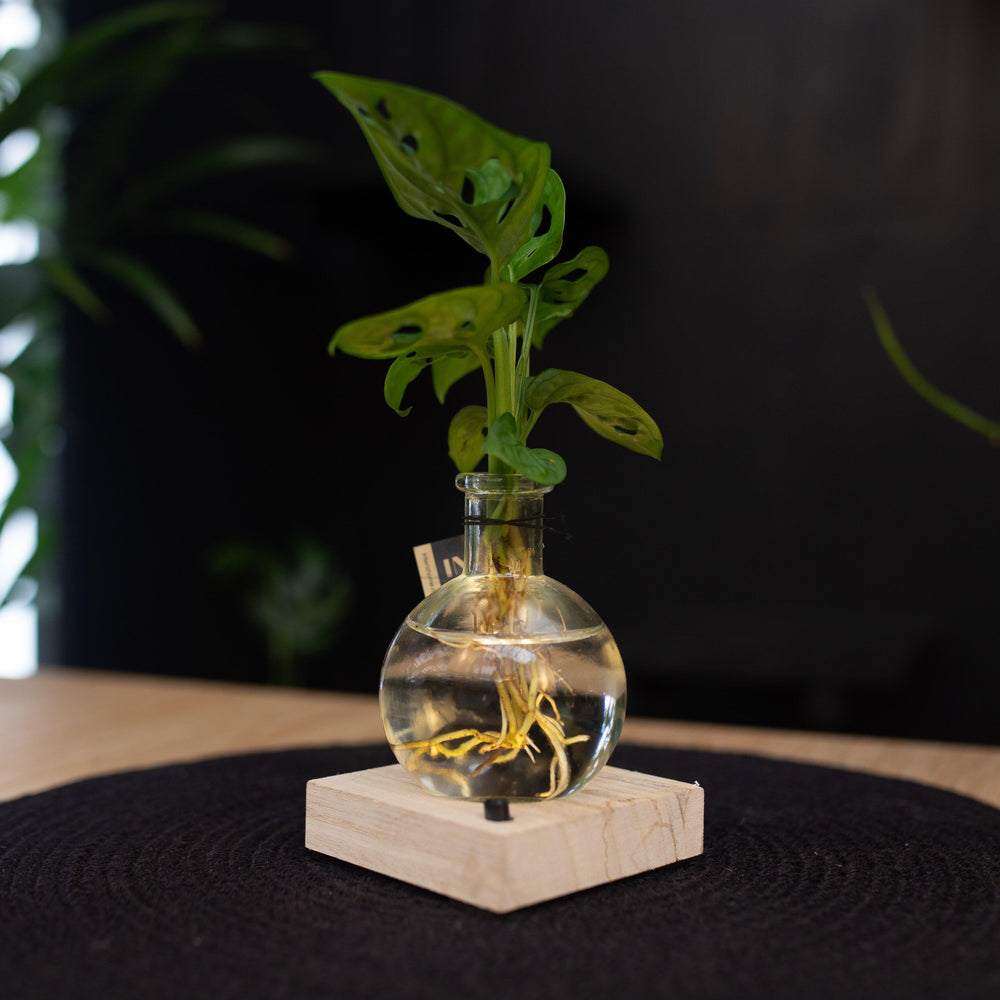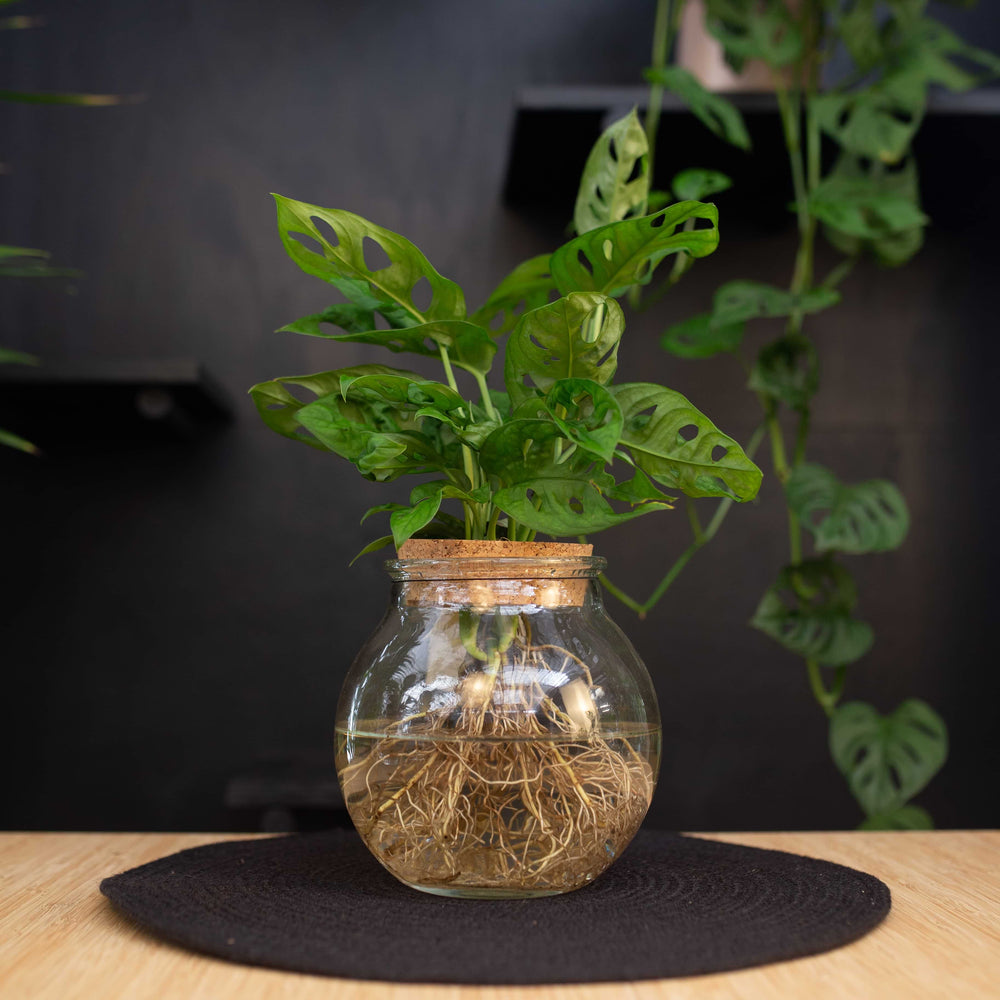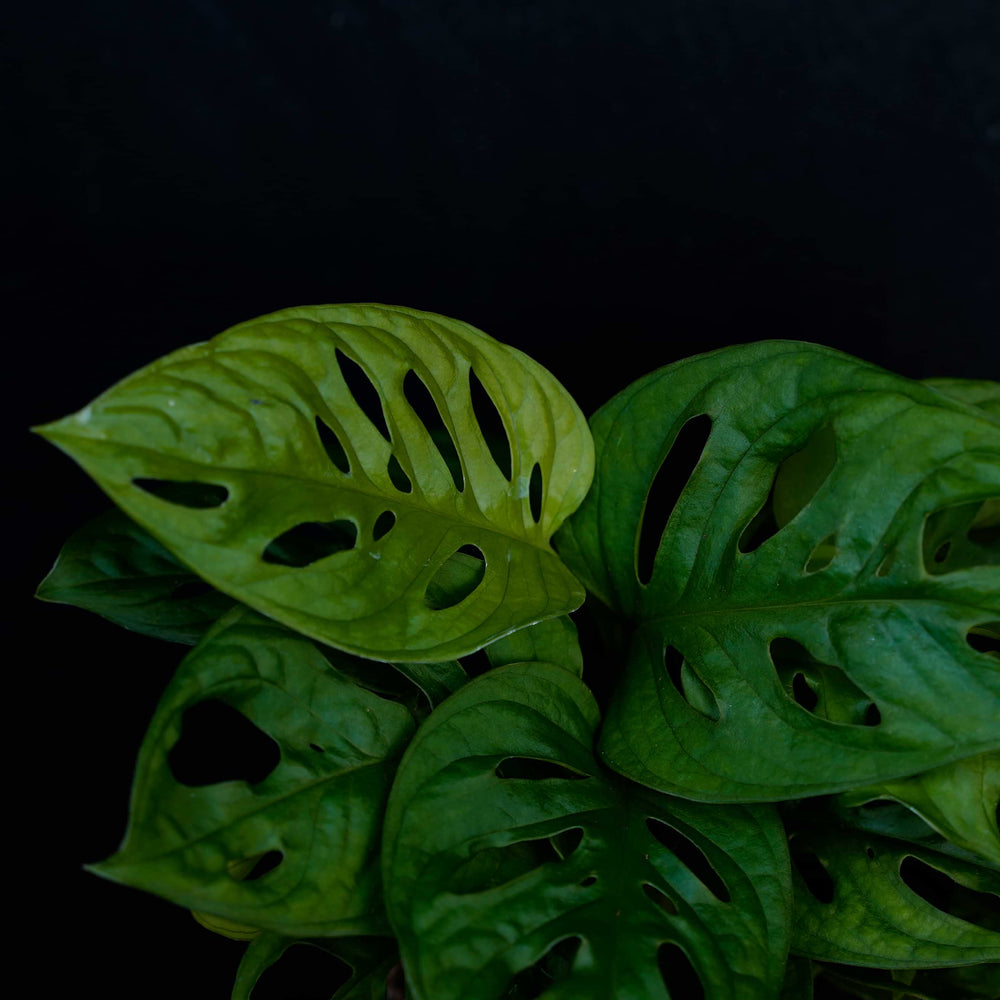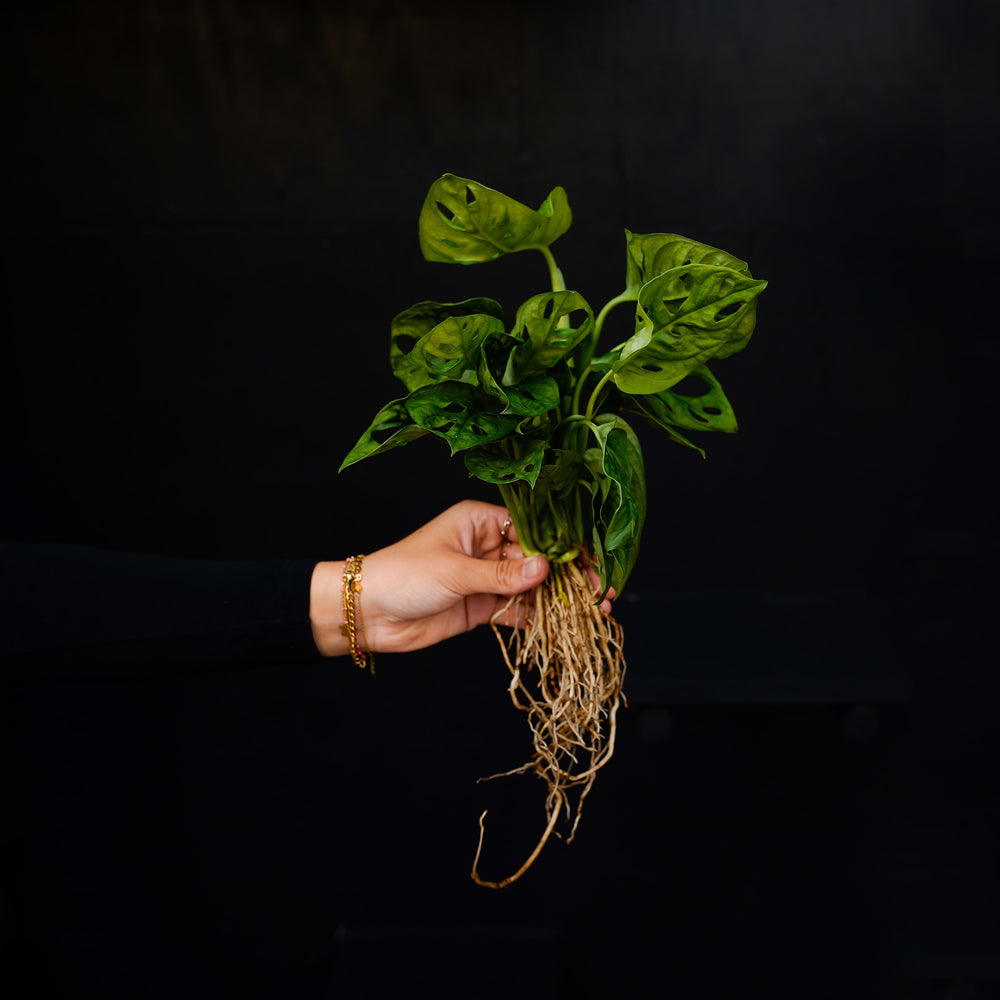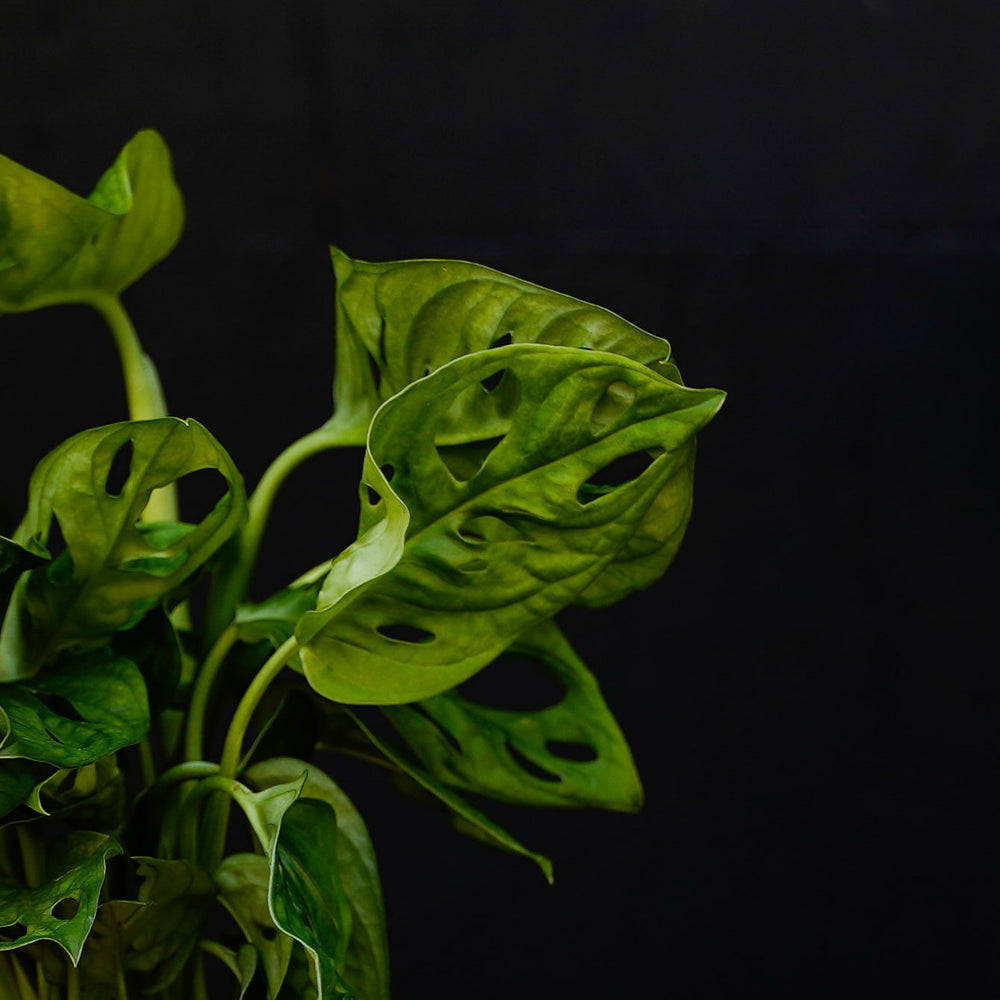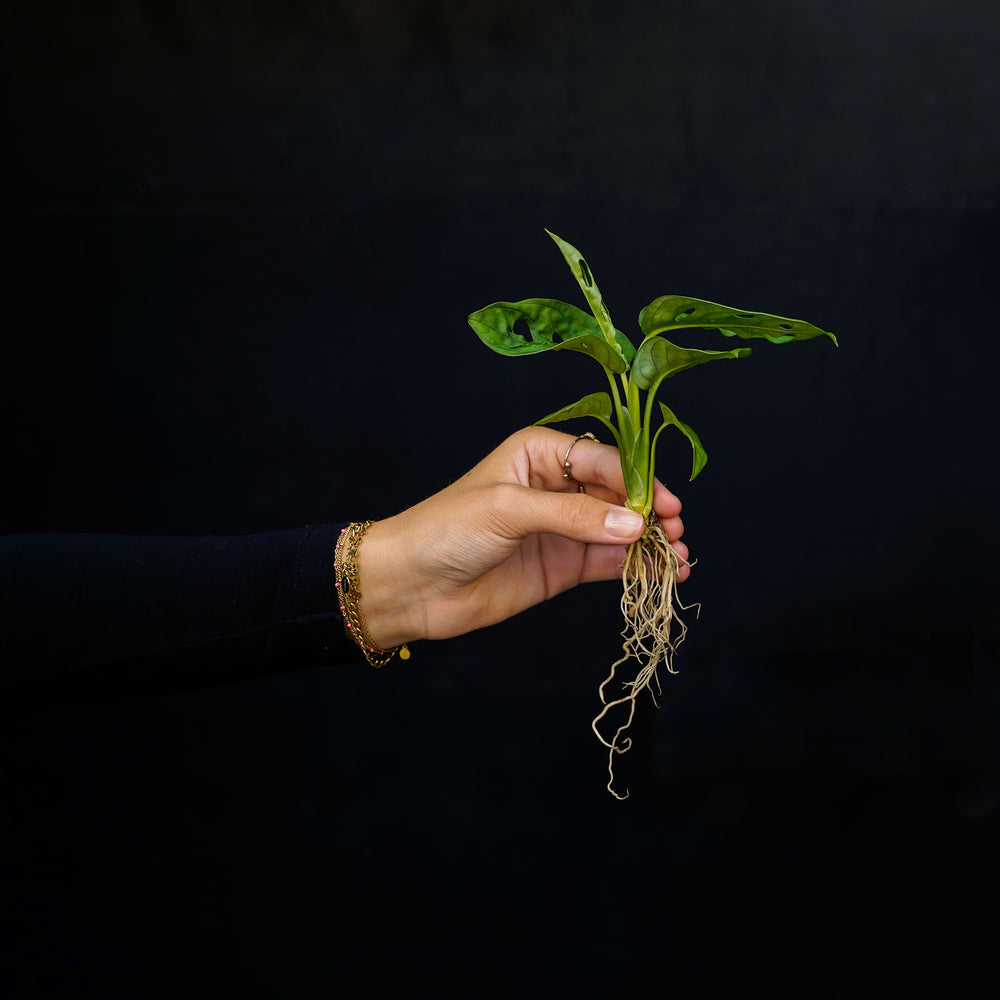Ontdek onze Monstera planten
Alles wat je wilt weten over de verzorging van je Monstera plant
De Monstera is een exotische schoonheid. Deze kamerplant trekt de aandacht met haar unieke bladeren en indrukwekkende uitstraling. Deze tropische kamerplant is afkomstig uit de regenwouden van Midden- en Zuid-Amerika.
De plant staat bekend om haar prachtige geperforeerde bladeren. Er zijn verschillende soorten Monstera waaruit je kunt kiezen. Deze hebben elk zijn eigen charme en karakter. Er zijn kleinere varianten voor op een tafel en grotere om op de grond te zetten.
De juiste plek voor je gatenplant moet je zorgvuldig kiezen. Deze prachtige plant gedijt het beste op een plek met helder, indirect licht. Direct zonlicht kan de bladeren verbranden en leiden tot verkleuring.
Plaats je Monstera daarom in de buurt van een raam op het noorden, oosten of westen. Op die manier kan de plant genieten van het zachte ochtend- of avondlicht.
Daarnaast is het belangrijk om te weten dat de Monstera het goed doet in een warme omgeving. Een gemiddelde kamertemperatuur tussen de 18°C en 24°C is ideaal voor deze tropische schoonheid.
Zorg er wel voor dat je de plant beschermt tegen tocht. Een koude luchtstroom kan de groei belemmeren.
Een goede watergift is essentieel voor de gezondheid van je gatenplant. Hier zijn enkele belangrijke punten om in gedachten te houden:
Het is belangrijk om de grond licht vochtig te houden, maar niet te nat. Overmatig water geven leidt tot wortelrot. Te weinig water resulteert in droge en slappe bladeren. Vind de juiste balans waarbij de grond licht vochtig aanvoelt. Meestal is dat 1x per week water geven.
Door de droogte van de grond te controleren weet je wanneer je gatenplant water nodig heeft. Steek je vinger ongeveer 2-3 centimeter diep in de grond. Het is tijd om water te geven wanneer de grond op die diepte droog aanvoelt. Wacht dus nog even als de grond vochtig is.
Zorg ervoor dat de pot waarin je Monstera groeit drainage gaten heeft. Dit voorkomt dat overtollig water in de pot blijft staan en de wortels verstikt. Plaats een schotel onder de pot om het overtollige water op te vangen. Gooi het water weg nadat de plant voldoende tijd heeft gehad om het op te nemen.
Het is belangrijk om de plant van voldoende voedingsstoffen te voorzien. Hier zijn enkele tips voor voeding:
Geef je Monstera meststoffen tijdens het groeiseizoen, meestal in het voorjaar en de
zomer. Stop met bemesten tijdens de wintermaanden, wanneer de groei vertraagt.
Verdun de meststof altijd met water voordat je deze aan je plant geeft. Te veel mest kan de wortels verbranden en schade veroorzaken.
Monstera’s hebben de neiging om snel te groeien, dus het is belangrijk om ze regelmatig te
verpotten. Hier zijn enkele richtlijnen voor het verpotten en de bodemvereisten:
Kies een pot die ongeveer 2-4 cm groter is dan de huidige pot van je Monstera. Te grote potten leiden tot overmatig vocht vasthouden. Te kleine potten belemmeren de wortels.
De lente is de beste tijd om je gatenplant te verpotten. De plant is namelijk in het voorjaar het meest actief. Vermijd het verpotten tijdens de wintermaanden Dat vertraagt de groei.
Wees voorzichtig bij het verpotten om de wortels niet te beschadigen. Plaats de plant in de nieuwe pot en vul de ruimte met verse potgrond. Druk de grond voorzichtig aan en geef daarna water.
Monstera’s hebben de neiging om weelderig te groeien. Regelmatig snoeien is belangrijk om de plant in vorm te houden en de grootte te beheersen. Knip de lange stelen of takken terug tot net boven een knoop of blad.
Gatenplanten zijn klimplanten en kunnen profiteren van ondersteuning om omhoog te groeien. Je kunt een mosstok of een trellis gebruiken waar de plant zich aan kan hechten. Zorg ervoor dat je de stengels voorzichtig vastbindt om ze te begeleiden terwijl ze groeien.
Het kan geen kwaad om lange uitlopers van Monstera planten af te knippen, op deze manier houd je de plant mooi in vorm en kan je weer nieuwe plantjes kweken.
Monstera soorten hebben verschillende groeiwijzen, hierdoor is het per soort verschillend hoe je het beste de plant kan stekken. Knip het blad altijd af bij het uitlooppunt en zorg dat er een worteltje zichtbaar is.
Zorg er wel voor dat je niet te veel bladeren afknipt, de plant heeft bladeren nodig om goed te kunnen ademen. Ook kan je gemakkelijk lelijke bladeren en oude stengels wegsnijden.
Bij klimmende soorten kan je een stengel met luchtwortel afknippen van de plant. Een luchtwortel is een wortel die aan de plant groeit zonder dat er grond aan te pas komt. Als je een stek met zo’n wortel in de aarde zet, zal hij doorgroeien en de stek verder ontwikkelen in een plant.
Ook kan je dit stekje, met de luchtwortel, in het water zetten. Zorg dat er minimaal twee bladeren aan het stekje zitten, en dat de bladeren en de stam niet in het water staan.
Stekken doen het vooral goed bij een temperatuur boven de 20 graden. Om de stek meer
overlevingskans te geven, kun je een plastic zak over de plant doen. Op deze manier wordt de luchtvochtigheid en de temperatuur verhoogd. Check wel regelmatig of het niet te vochtig is onder het plastic.
Als je het juist mooi vind als je klimmende Monstera lekker groot en wild wordt en je hem helemaal niet wilt stekken zijn ze gemakkelijk te leiden langs een mosstok of gaasrek. Een uitloper kan het beste teruggeleid worden naar de mosstok. Op deze manier kan je een Monstera ook mooi in vorm houden. De plant zal door middel van luchtwortels zichzelf vastbinden aan de mosstok of aan het gaasrek.
Geef de stek in het begin niet teveel water. De stek heeft nog weinig wortels waardoor er snel wortelrot kan ontstaan.
Gele bladeren bij de Monstera duiden op te veel water. Controleer of de grond te nat is en pas de watergift aan. Te veel direct zonlicht kan ook gele bladeren veroorzaken, dus zorg voor voldoende schaduw.
Bruine bladranden van de gatenplant wijzen op te veel direct zonlicht. Verplaats je gatenplant naar een plek met indirect zonlicht. Te weinig water geven kan ook bruine bladeren veroorzaken. Zorg ervoor dat de grond gelijkmatig vochtig blijft.
Bruine vlekken op de bladeren kunnen worden veroorzaakt door direct zonlicht, lage luchtvochtigheid of te veel water. Pas de omgeving aan om het probleem op te lossen.
Verwijder regelmatig dode of vergeelde bladeren om de gezondheid van je Monstera te verbeteren. Knip de bladeren voorzichtig af bij de basis met een scherpe schaar.
Aan het uiteinde van de bladpunten kunnen van die kleine druppeltjes water hangen, dit heet guttatie. Dit kan ontstaan nadat je de plant water hebt gegeven, maar kan ook ontstaan zonder dat je je plant recent water gegeven hebt.
De meeste soorten van de Monstera familie vertonen deze druppels. Het is niet schadelijk voor de plant, maar misschien wel voor je vloer of meubels, want deze druppels kunnen vlekken achterlaten.
Hoe dat komt: de plant neemt water op met zijn wortels en verdampt het weer via zijn bladeren. In de nacht zijn de poriën van de bladeren dicht en verdampt de plant geen water. Maar de wortels nemen nog wel water op, waardoor er een overdruk van vocht ontstaat. Om dat overtollige vocht kwijt te kunnen raken, heeft de plant speciale waterklieren in de punt van de bladeren, waar de waterdruppels ontstaan.
Bij sommige Monstera's kun je de druppels voorkomen door deze minder water te geven. Maar bij sommige planten moet je helaas accepteren dat ze dit doen.
De Monstera is een exotische schoonheid. Deze kamerplant trekt de aandacht met haar unieke bladeren en indrukwekkende uitstraling. Deze tropische kamerplant is afkomstig uit de regenwouden van Midden- en Zuid-Amerika.
Monstera Deliciosa. Dit is de meest bekende en populaire soort Monstera. Deze heeft grote, hartvormige bladeren met opvallende insnijdingen en gaten. Deze kamerplant staat bekend als de “gatenplant” of "vogelbekplant”.
Monstera Adansonii. Ook wel bekend als de “gatenplant” of “Swiss cheese plant”. Dit soort heeft kleinere bladeren dan de Monstera Deliciosa.
Monstera Obliqua. Dit soort staat bekend om zijn extreem gatenpatroon en wordt soms de “gatenkaasplant” genoemd. De bladeren zijn erg fragiel en hebben een meer varenachtige vorm. Monstera obliqua is zeldzaam en moeilijk verkrijgbaar.
Monstera Borsigiana. Dit soort lijkt sterk op de Deliciosa. Alleen dan met kleinere bladeren en een compacter formaat. Deze wordt soms beschouwd als een variëteit of een cultivar van Monstera Deliciosa.
Monstera Thai Constellation. Opvallend omdat de bladeren bont van kleur zijn. Deze plant is heel populair omdat hij bijna niet verkrijgbaar is.
